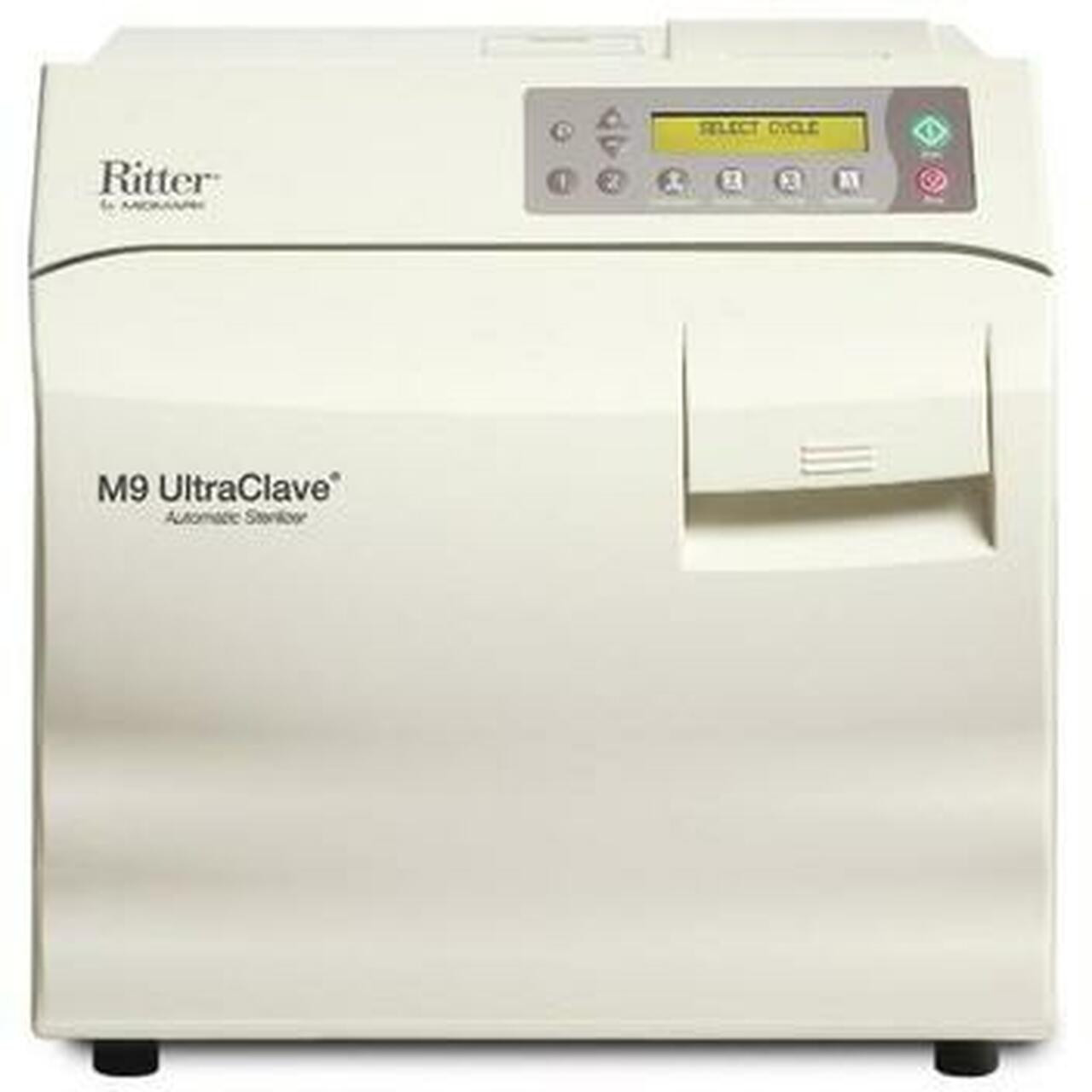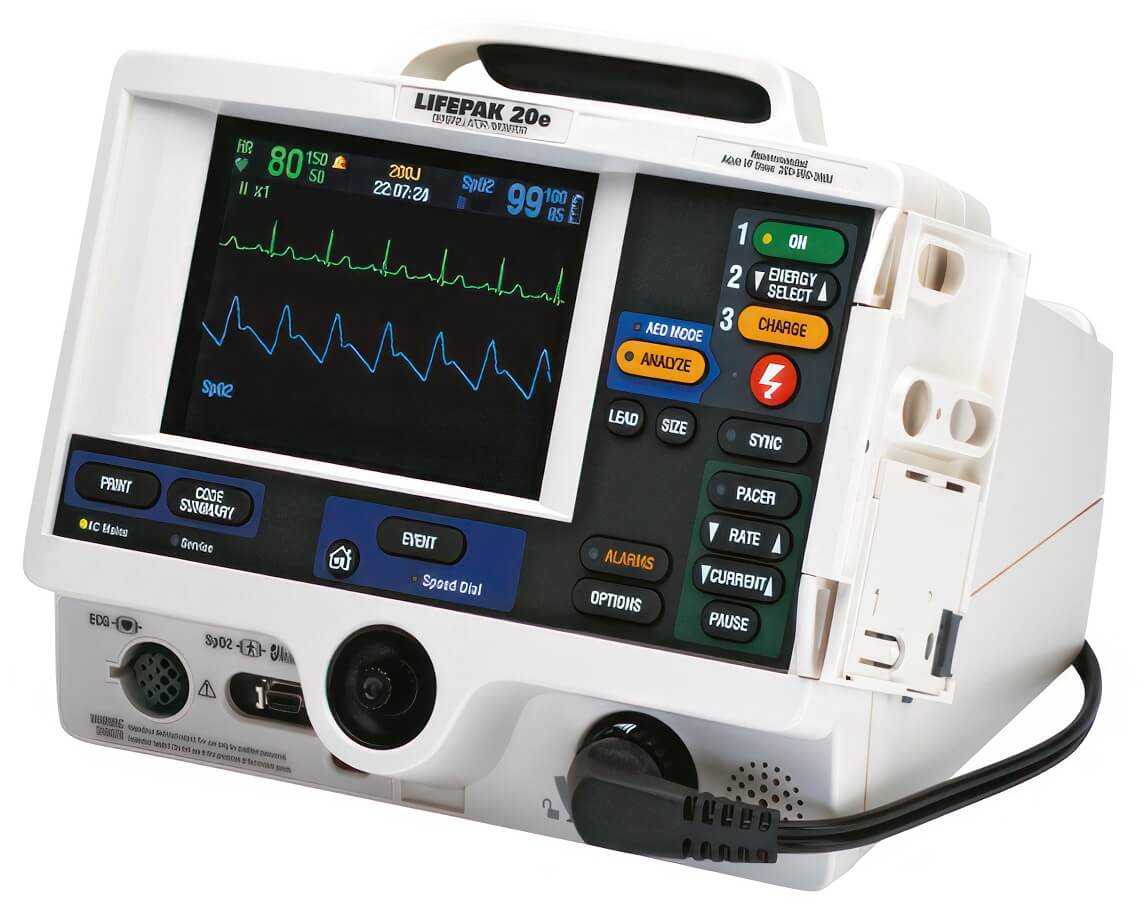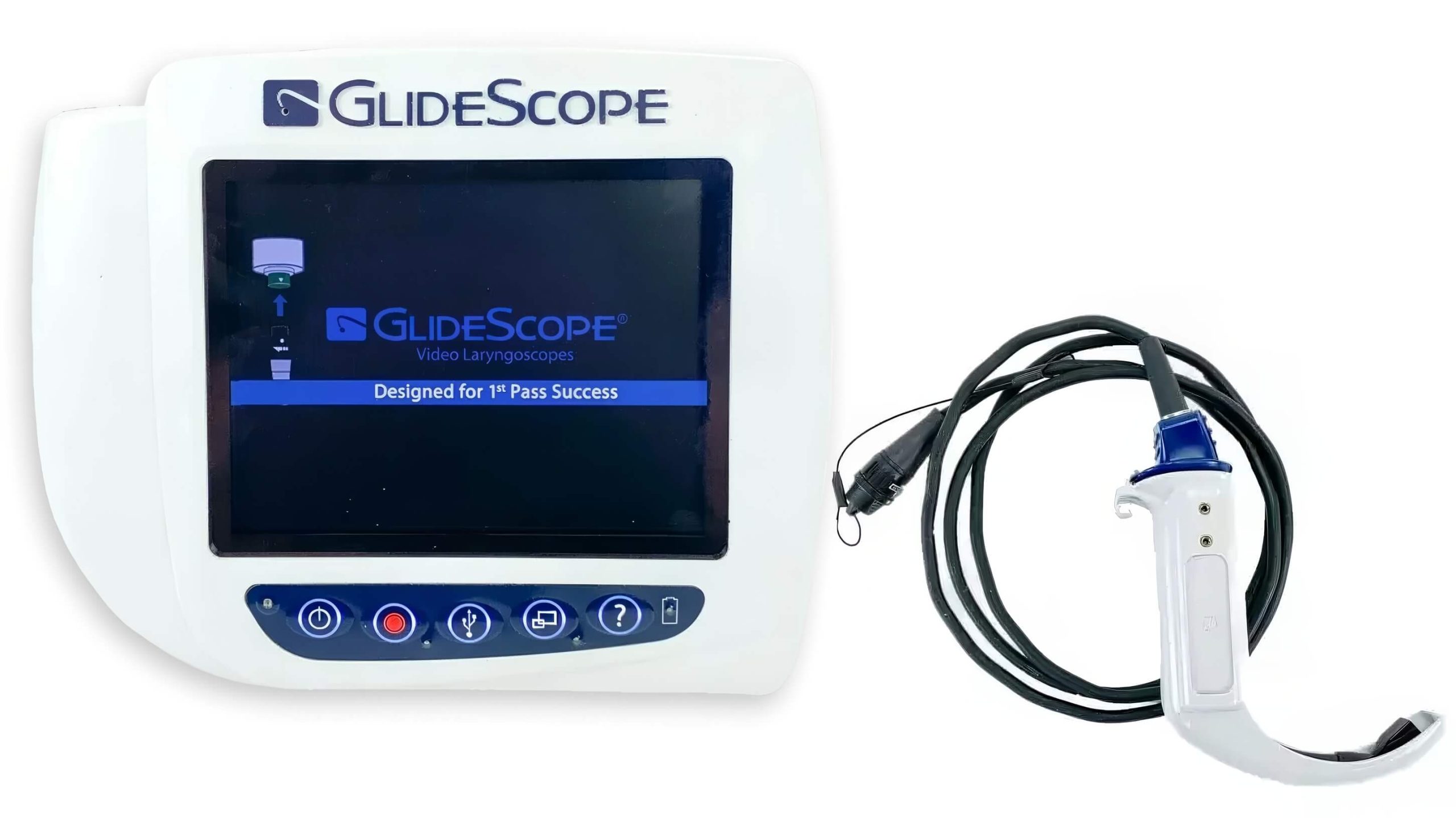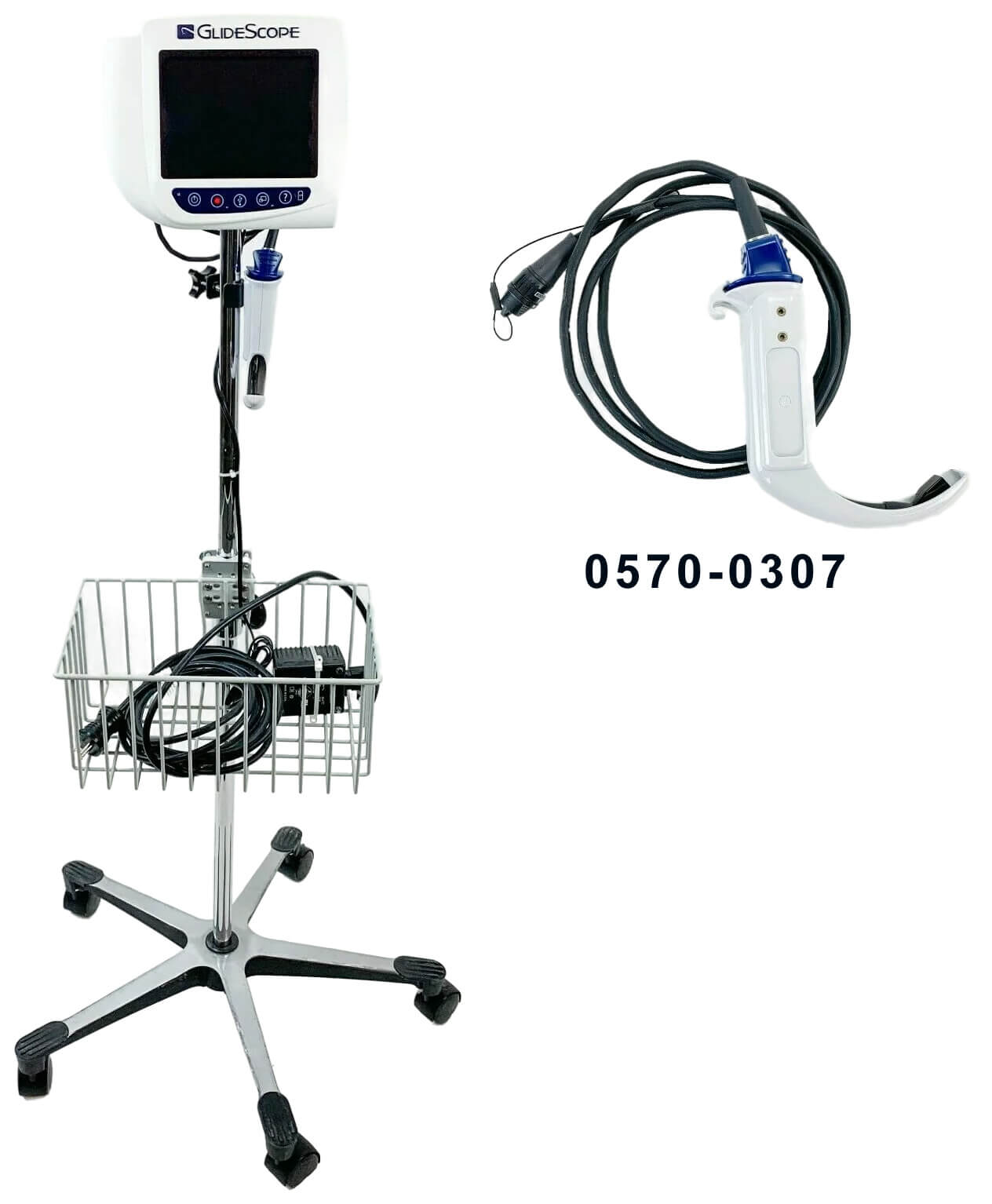Featured Equipment from Auxo Medical
Auxo Medical is a leading provider of high-quality medical equipment for healthcare facilities. We understand the importance of having reliable and efficient equipment to ensure the best patient care. In this article, we will explore some of the top products offered by Auxo Medical, including the Stryker Cast Saw with Vacuum, Midmark Ritter M9 Ultraclave, Welch Allyn Spot Vital Signs LXi Monitor, Verathon GlideScope Monitor with Baton, and the Lifepak 20E Defibrillator.
Stryker Cast Saw with Vacuum
 The Stryker 940 Cast Cutter and 986 Cast Cutter Vacuum combo is a must-have tool for any healthcare facility that deals with cast removal. This innovative device combines the power of a cast saw with the convenience of a vacuum system. The cast saw uses oscillating blades to safely and efficiently cut through casts, while the vacuum system collects the cast debris, reducing the risk of contamination and creating a cleaner environment. With its ergonomic design and powerful performance, the Stryker Cast Saw and Vacuum system is a reliable and efficient tool for cast removal.
The Stryker 940 Cast Cutter and 986 Cast Cutter Vacuum combo is a must-have tool for any healthcare facility that deals with cast removal. This innovative device combines the power of a cast saw with the convenience of a vacuum system. The cast saw uses oscillating blades to safely and efficiently cut through casts, while the vacuum system collects the cast debris, reducing the risk of contamination and creating a cleaner environment. With its ergonomic design and powerful performance, the Stryker Cast Saw and Vacuum system is a reliable and efficient tool for cast removal.
Midmark Ritter M9 Ultraclave (Autoclave)
 When it comes to sterilization, the Midmark Ritter M9 Ultraclave is a top choice for healthcare professionals. This automatic sterilizer is known for its ease of use and reliability. With just a few simple steps, you can load the autoclave, select the desired cycle, and let the machine do the rest. The Midmark Ritter M9 Ultraclave fills with the correct amount of water and automatically opens the door to dissipate steam, ensuring fast drying time for your instruments. With built-in safety features and self-program controls, this autoclave meets the highest standards of sterilization.
When it comes to sterilization, the Midmark Ritter M9 Ultraclave is a top choice for healthcare professionals. This automatic sterilizer is known for its ease of use and reliability. With just a few simple steps, you can load the autoclave, select the desired cycle, and let the machine do the rest. The Midmark Ritter M9 Ultraclave fills with the correct amount of water and automatically opens the door to dissipate steam, ensuring fast drying time for your instruments. With built-in safety features and self-program controls, this autoclave meets the highest standards of sterilization.
Welch Allyn Spot Vital Signs LXi Monitor
 Accurate vital signs monitoring is crucial in any healthcare setting, and the Welch Allyn Spot Vital Signs LXi Monitor is designed to provide reliable and efficient measurements. This compact and portable monitor offers a wide range of parameters, including blood pressure, pulse rate, temperature, and SpO2. With its intuitive interface and easy-to-read display, healthcare professionals can quickly and accurately assess a patient’s vital signs. The Welch Allyn Spot Vital Signs LXi Monitor is a valuable tool for primary care clinics, hospitals, and other healthcare facilities.
Accurate vital signs monitoring is crucial in any healthcare setting, and the Welch Allyn Spot Vital Signs LXi Monitor is designed to provide reliable and efficient measurements. This compact and portable monitor offers a wide range of parameters, including blood pressure, pulse rate, temperature, and SpO2. With its intuitive interface and easy-to-read display, healthcare professionals can quickly and accurately assess a patient’s vital signs. The Welch Allyn Spot Vital Signs LXi Monitor is a valuable tool for primary care clinics, hospitals, and other healthcare facilities.
Verathon GlideScope Monitor with Baton
 The Verathon GlideScope Monitor with Baton is a cutting-edge device that enhances visualization during intubation procedures. This monitor provides a clear and magnified view of the airway, making intubation safer and more efficient. The Baton camera system captures high-quality images and videos, allowing healthcare professionals to assess and document the procedure. With its user-friendly interface and advanced imaging technology, the Verathon GlideScope Monitor with Baton is a valuable asset in any operating room or emergency department.
The Verathon GlideScope Monitor with Baton is a cutting-edge device that enhances visualization during intubation procedures. This monitor provides a clear and magnified view of the airway, making intubation safer and more efficient. The Baton camera system captures high-quality images and videos, allowing healthcare professionals to assess and document the procedure. With its user-friendly interface and advanced imaging technology, the Verathon GlideScope Monitor with Baton is a valuable asset in any operating room or emergency department.
Lifepak 20E Defibrillator
 In emergency situations, having a reliable defibrillator can mean the difference between life and death. The Lifepak 20E Defibrillator is a state-of-the-art device that delivers high-quality defibrillation and monitoring capabilities. This defibrillator is equipped with advanced features such as CPR guidance, ECG monitoring, and synchronized cardioversion. With its intuitive interface and clear visual prompts, the Lifepak 20E Defibrillator is designed to support healthcare professionals in delivering effective and timely care to patients experiencing cardiac emergencies.
In emergency situations, having a reliable defibrillator can mean the difference between life and death. The Lifepak 20E Defibrillator is a state-of-the-art device that delivers high-quality defibrillation and monitoring capabilities. This defibrillator is equipped with advanced features such as CPR guidance, ECG monitoring, and synchronized cardioversion. With its intuitive interface and clear visual prompts, the Lifepak 20E Defibrillator is designed to support healthcare professionals in delivering effective and timely care to patients experiencing cardiac emergencies.
Order These and Other Trusted Medical Equipment from Auxo Medical
At Auxo Medical, we understand the critical need for reliable and high-quality medical equipment in healthcare settings. With an unwavering commitment to excellence, we offer a comprehensive range of trusted medical equipment, ensuring healthcare professionals have access to the tools they need to provide outstanding patient care. From cutting-edge sterilization equipment, patient monitors, to the latest in surgical tables, every item in our inventory is selected for its performance, durability, and compliance with the highest industry standards. When you choose Auxo Medical, you’re not just ordering medical equipment; you’re securing a partnership with a provider that places your patient’s health and safety at the forefront. Experience the difference that comes with relying on a trusted source for all your medical equipment needs. View our medical equipment catalog online with over 1200 items today or call our office at (888) 728-8448.
Frequently Asked Questions (FAQ)
- What are the key features of the Stryker Cast Saw with Vacuum?
The Stryker Cast Saw with Vacuum combines the power of a cast saw with the convenience of a vacuum system. It has oscillating blades for safe and efficient cast removal, and the vacuum system collects cast debris for a cleaner environment. - How does the Midmark Ritter M9 Ultraclave ensure sterilization?
The Midmark Ritter M9 Ultraclave is an automatic sterilizer that fills with the correct amount of water and opens the door automatically to dissipate steam, ensuring fast drying time. It also has built-in safety features and self-program controls for specific instrument processing needs. - What parameters can the Welch Allyn Spot Vital Signs LXi Monitor measure?
The Welch Allyn Spot Vital Signs LXi Monitor can measure blood pressure, pulse rate, temperature, and SpO2. Italso offers an intuitive interface and easy-to-read display for quick and accurate assessment of a patient’s vital signs. - How does the Verathon GlideScope Monitor with Baton enhance intubation procedures?
The Verathon GlideScope Monitor with Baton provides a clear and magnified view of the airway during intubation procedures. The Baton camera system captures high-quality images and videos, allowing healthcare professionals to assess and document the procedure more effectively. - What advanced features does the Lifepak 20E Defibrillator offer?
The Lifepak 20E Defibrillator is equipped with advanced features such as CPR guidance, ECG monitoring, and synchronized cardioversion. It provides clear visual prompts and user-friendly interface to support healthcare professionals in delivering effective and timely care during cardiac emergencies.




